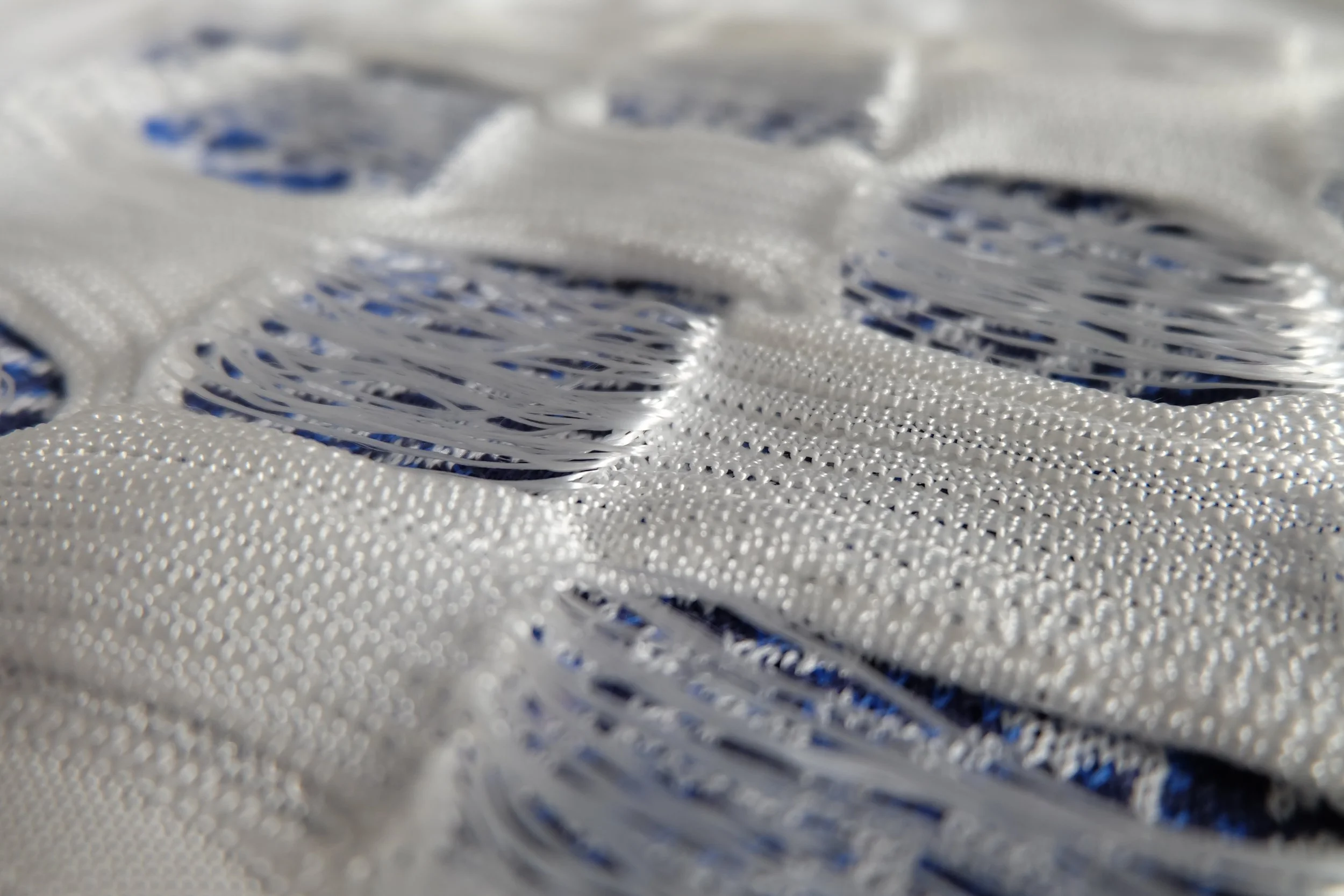Transforming yarn waste
Transforming yarn waste critically explores the recycling of synthetic yarn waste into textiles.
Specifically, it deals with yarn waste from spinning processes. This waste was generated by KINKLEID founder, during an academic research project at the University of Maastricht (NL). While the standard practice was to incinerate such waste, she became determined to recycle it.
Several partners came together, combining different areas of expertise and developing low-tech, small-scale approaches to address polymer waste. Our work merges material science with artisanal methods, resulting in a library of spun, woven, and non-woven samples and fashion prototypes.
The research phase included a collaboration with Studio Pluis (NL) for felting trials, and Studio HiLo (DE) and Saxion Hogeschool (NL) for re-spinning of the yarn waste. Research on re-melting of the waste for 3d-printing is currently ongoing.
Additionally, Turtlehorn (DE/ES) contributed through product design, creating a pair of sunglasses and a jacket prototype woven through traditional Spanish techniques. This jacket, however, will not be commercialized due to the material’s tendency to shed microfibers. It instead serves as a statement piece: a reminder of the environmental complexities of synthetic textiles and the ethics of circularity.
Our work therefore serves two purposes:
To demonstrate how yarn waste can be transformed rather than incinerated, contributing to a circular economy; and
To critically question the assumption that “circular” automatically means “sustainable”.
Through this work, we invite the audience to stay reflective and critical.
Research phase
To Weave or Not To Weave
The demand for recycled textiles and yarns is expected to grow significantly in the coming years. How can we ensure their quality in terms of both durability and environmental safety?
To Weave or Not to Weave researched the most effective recycling processes for preserving the long filament length of synthetic yarn waste. Special attention was given to artisanal methods that prioritize material integrity, aligning with the core principles of circular design.
This project produced samples of non-woven and woven textiles made from recycled yarns, along with a critical analysis of the recycling process. Ultimately, this research aimed to provide new knowledge and insights, contributing to more sustainable textile ecosystems.
To Weave or Not to Weave included a collaboration with Sanne Muiser, creative researcher at Studio Pluis, who contributed expertise and equipment on felting techniques for the development of non-woven textiles. Additionally, the woven path was informed by a spinning training at Studio HiLo in Berlin.
This project was funded by the Creative Industries Fund NL – Experiment Grant.
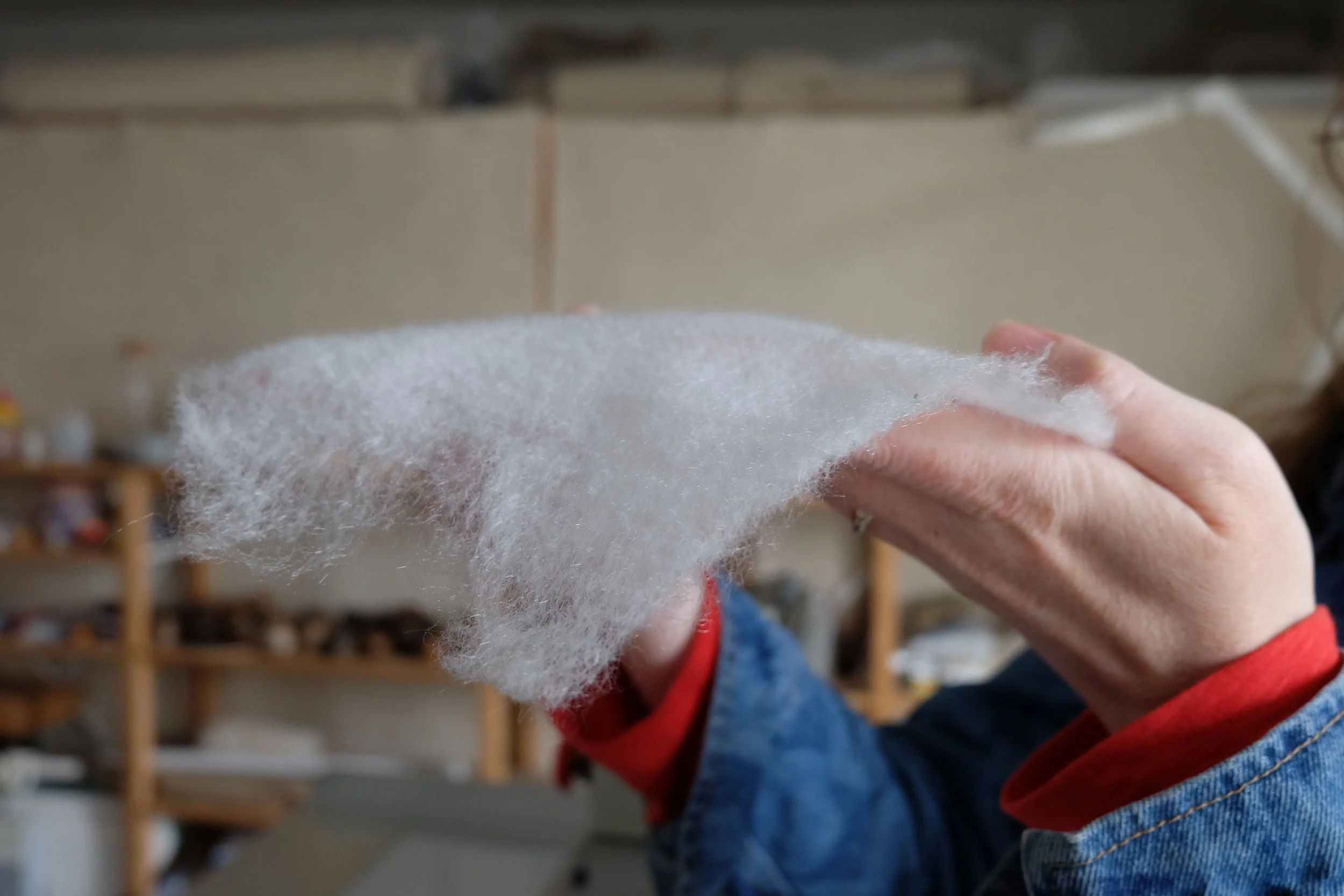

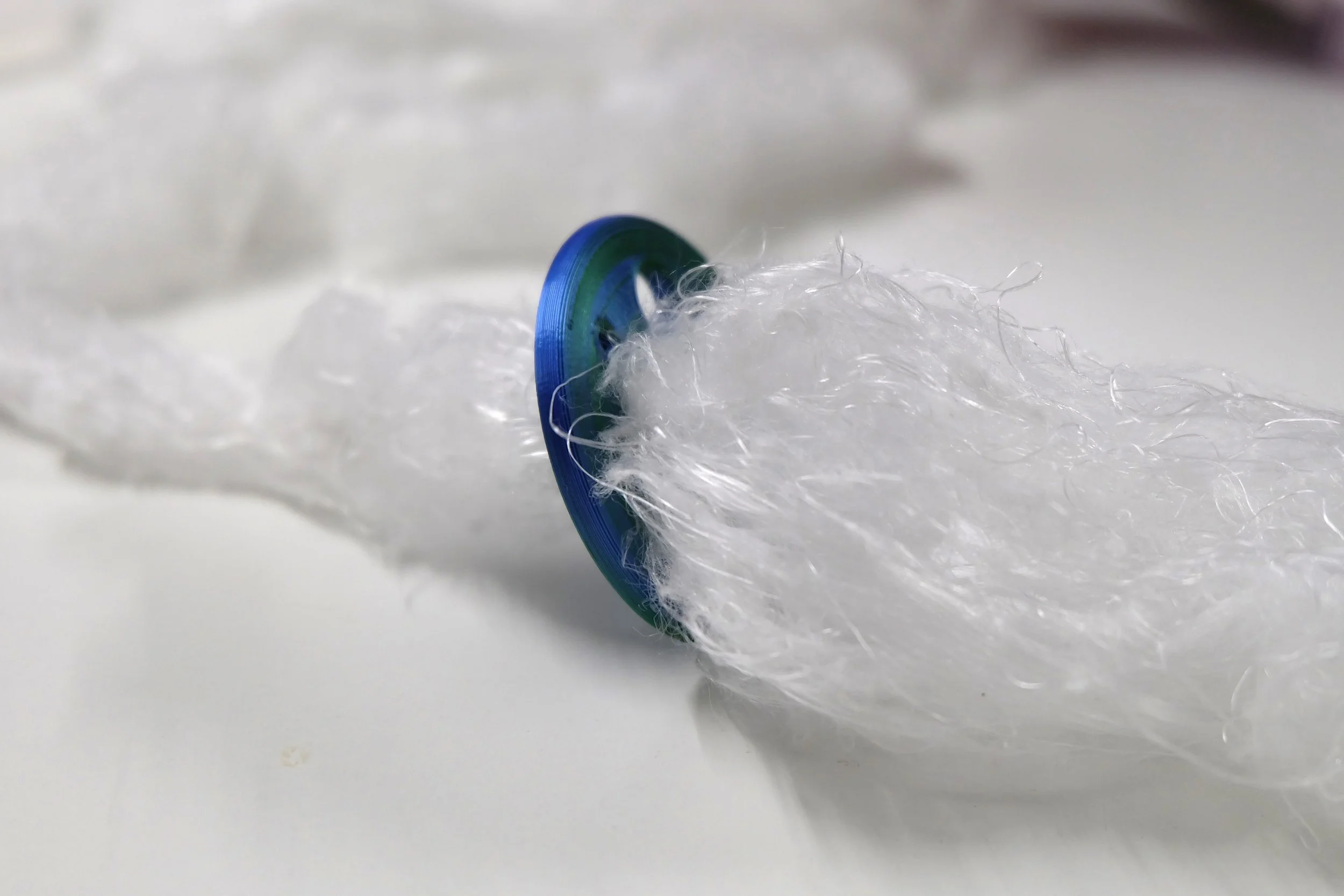
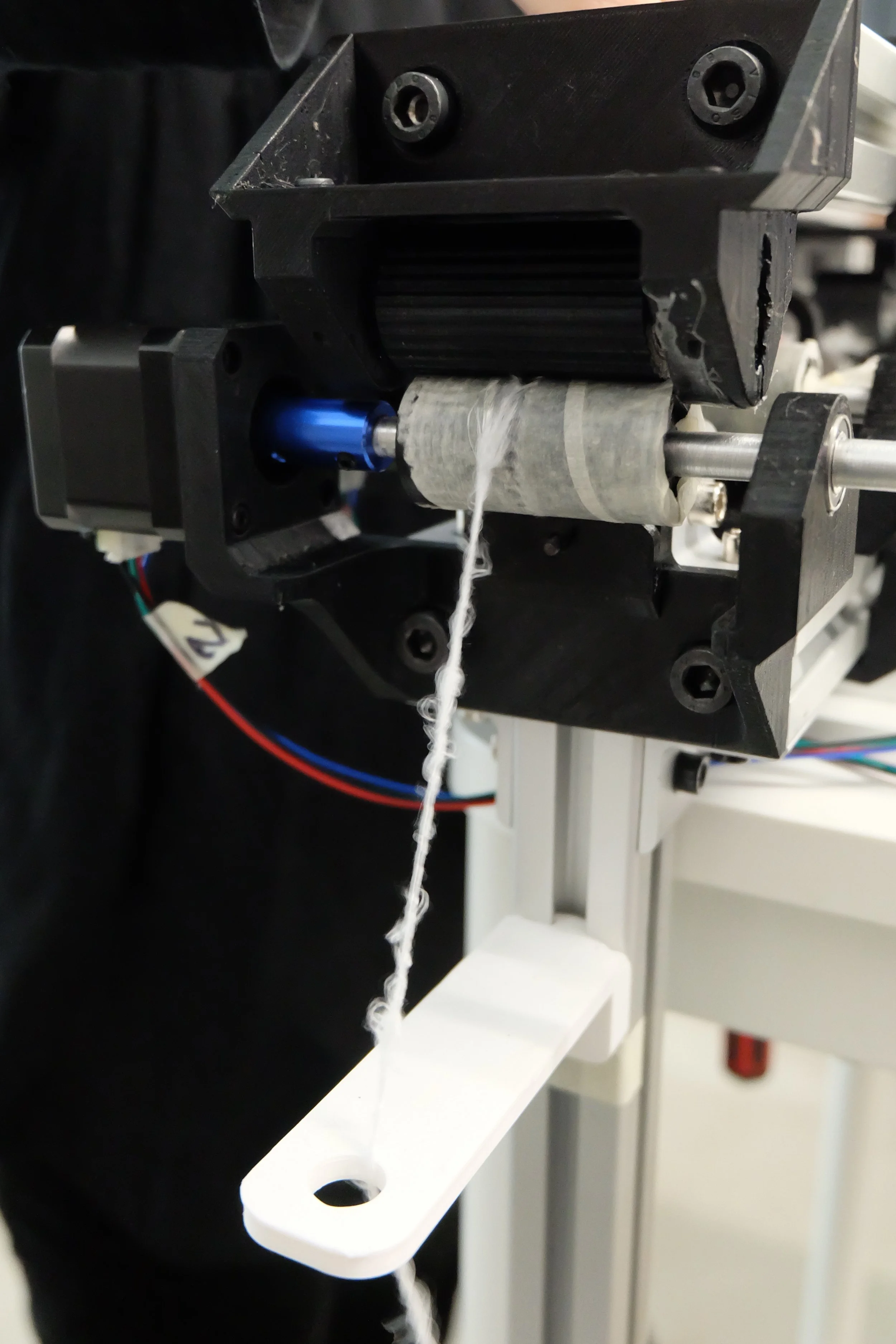
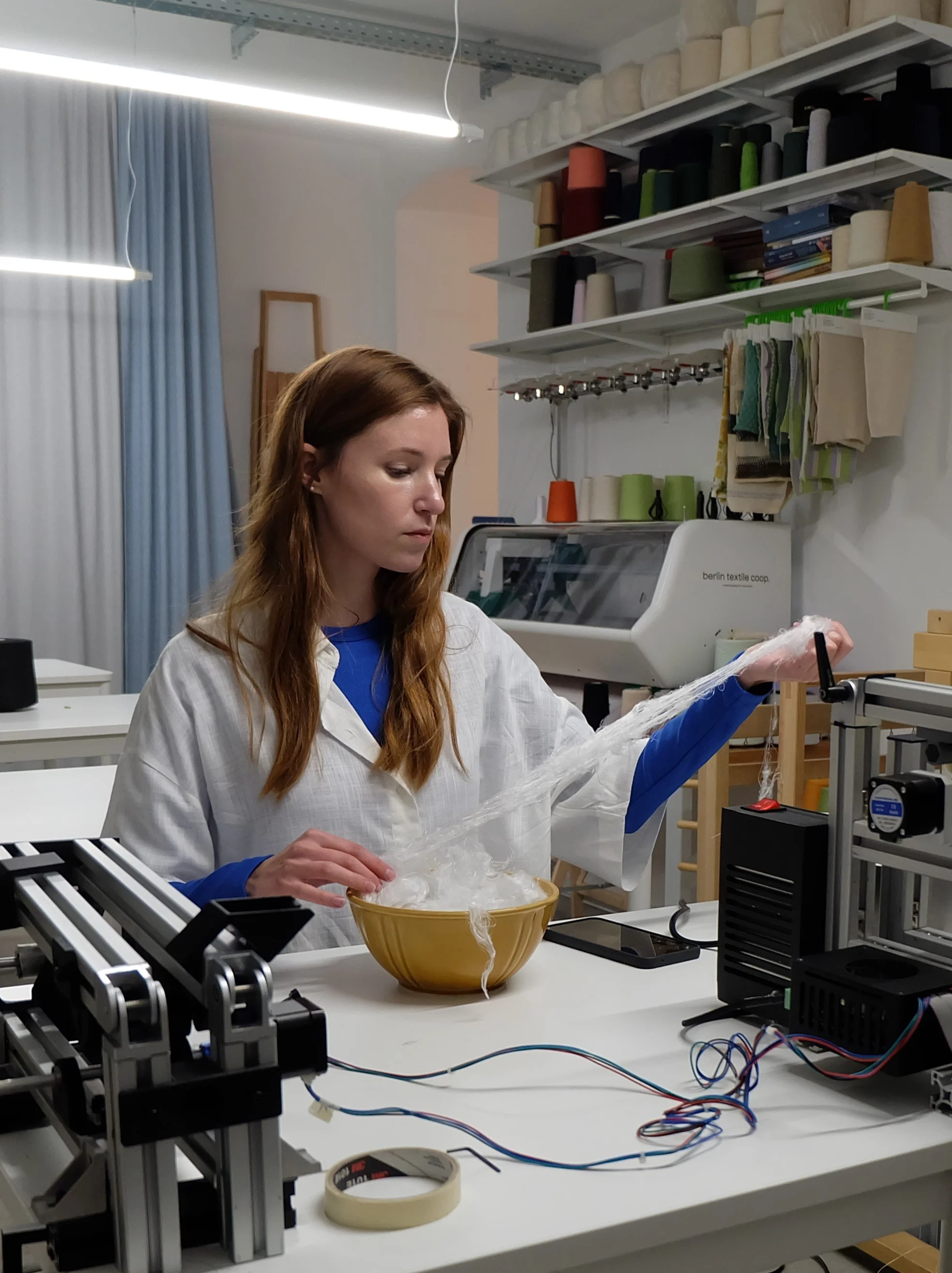
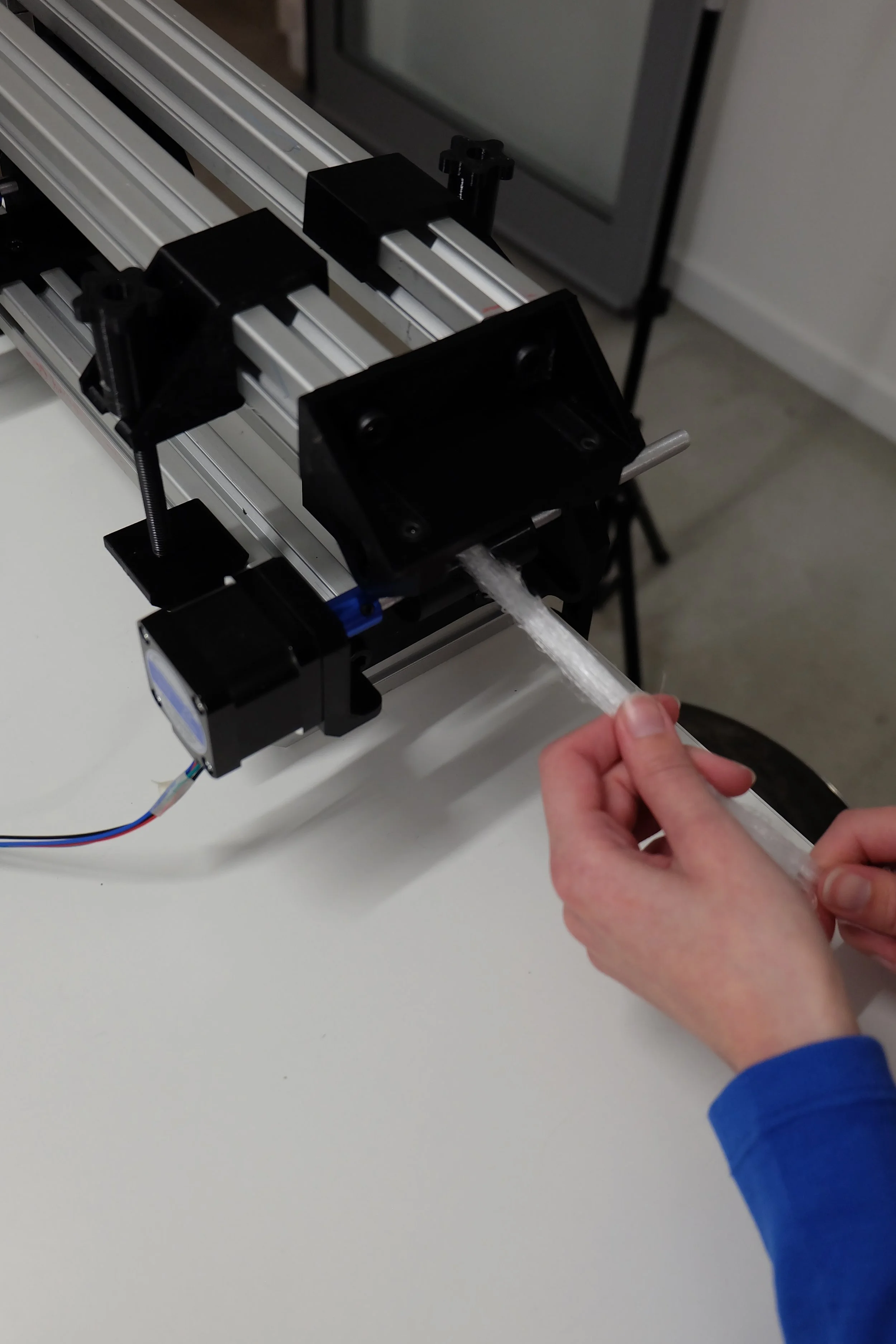

Product design
Turtlehorn x KINKLEID
Designer Maria Voth Velasco (Turtlehorn) and researcher Cristina Palacios (KINKLEID) came together to explore the possibilities of yarn waste for fashion. Through an ongoing investigation two main prototypes have emerged, which were on display at Milan Design Week 2025 supported by WORTH Partnership Project.
Turtlehorn x KINKLEID offers a case study in interdisciplinary innovation to repurpose waste, empower women, and reimagine fashion systems.
3d-printed sunglasses
Using melt-extrusion techniques, polymer yarn waste can be transformed into a filament suitable for 3D printing.
This scalable process allows for the creation of customizable 3D-printed sunglasses. The first samples are available at Turtlehorn’s website.
Through the traditional Andalusian jarapa weaving technique, untreated polymer yarn waste was woven into a striking jacket prototype.
While visually powerful, this piece is not intended for commercial release due to the material’s tendency to shed microfibers. This serves as a reminder of the environmental complexities concerning synthetic textiles.
jarapa waste jacket
Both pieces have been incorporated as part of a larger fashion collection by Turtlehorn’s streetwear brand.
CIRCULAR ≠ SUSTAINABLE
Recycling waste that would otherwise be incinerated may sound like a victory; and in many ways, it is.
Transforming yarn waste accomplished a truly circular approach by giving new life to discarded yarns. But that does not necessarily mean that it is sustainable.
To move towards sustainability in (circular) design, we need systems thinking, examining the impact of our choices across the entire value chain. This includes considering the initial material, methodology and end product.
There is a reason why the R strategy starts with Rethink and ends with Recycle. In order to achieve a sustainable fashion system, we can’t just focus on circular approaches. Although recycling helps keep materials in the loop, potentially reducing the need for virgin resources, the priority should always be on rethink and refuse.
